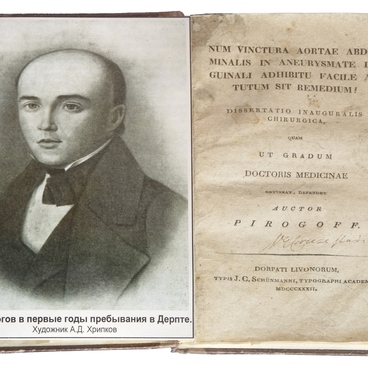The collection of the Military Medical Museum contains an engraving by the artist John Stephen Calcar, which depicts an anatomical theater of the Renaissance. This piece is an illustration to the work ‘On the structure of the human body …’ of the physician and anatomist of the 16th century and the founder of scientific anatomy Andreas Vesalius.
Vesalius was one of the first to study a human body by dissecting corpses. He described the internal organs and corrected the mistakes made by the classical authors Aristotle and Galen. Not many of Vesalius' contemporaries approved of his works, but anatomy became more and more popular, as well as public dissections in anatomical theaters. At first, these were temporary structures, similar to large kiosks — open garden pavilions. They were well ventilated, and the dissection table could be seen from all sides. Such theaters served for no more than a year and were dismantled afterwards.
One of the most famous permanent anatomical theaters was opened in Padua, Italy in 1594. It was a wooden cone-shaped building. In the center there was a dissection table, galleries for spectators surrounded the central table. The galleries were decorated with carved balustrades — railings made of figured posts. The first row was always occupied by the rector of the University of Padua, as well as professors, noble people of the city, and magistrates. The second and third rows were reserved for medical students, while the rest were open to the public.
The public dissection was a ritualized celebration. It began with a solemn procession, accompanied by music and excerpts from the works of ancient authors on anatomy.
It is this event that van Calcar captured in his engraving. In the center, to the left of the dissection table, Andreas Vesalius is depicted. He performs a dissection of a woman’s body and comments on the process. There is a student standing to his right, anatomist Realdo Colombo. The bearded man between Colombo and Vesalius is Titian, an Italian painter and teacher of van Calcar.
The engraving also features Martin Luther, the founder of German Protestantism. In the center of the upper right fragment, the artist depicted Jacob Sylvius, anatomist, professor of the Faculty of Medicine in Paris, in an Arab fez and with a long beard. The writer Francois Rabelais, the author of the book ‘Gargantua and Pantagruel’ is behind Sylvius' right shoulder. At the column on the right, Margaret of Navarre, sister of the French king Francis I, stands with her head covered. She was an educated woman, who appreciated scientific pursuits and had a great influence on many prominent people of her time.



